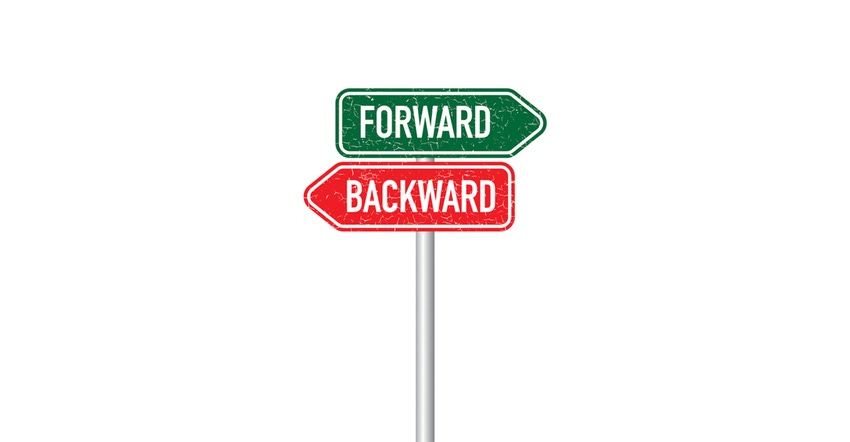
2021 was a most unusual year for recycling. Markets were hot, recycling did well and legislators stepped up their game. What happened last year, what did we learn and what can we expect in this new year?
Let’s start with markets. Prices for cardboard boxes, mixed paper, steel cans, natural and colored HDPE containers and polypropylene containers reached or came close to all time highs. Then they fell. Falling prices for recyclables are normal in the last month or two of the year. Demand for recycled paper softens because manufacturing slows down as finished products meet holiday shoppers. Demand for used containers also softens as soft drink, beer, and bottled water sales fall with the arrival of cold weather.
As always, recycling prices are a function of demand and supply. Recycled paper prices benefitted from increased retail demand for new boxes, increased domestic capacity to make those boxes from old cardboard boxes and mixed paper, and a reviving export market. Plastic recycling prices benefitted from rising oil prices and recycled content goals of consumer products companies.
2022 should continue to see solid markets. Demand and prices remain strong, barring an economic slide caused by the impact of the latest COVID mutation(s). Domestic capacity to use recycled paper and plastic will increase in 2022. Prices rebounded significantly from the doldrums starting in 2017 with the Chinese import bans. With only one exception (natural HDPE), end of year markets were far stronger than in the last two years. We are not there yet, but it is possible we will be seeing prices for recyclables that were normal a decade ago.
On the legislative side, recycling was also hot. Legislators didn’t have time to do much about recycling in 2020 because of COVID and budget issues. They had more time in 2021. I’m going to focus on three topics: recycled content, extended producer responsibility (EPR) for packaging and food waste.
Washington and Connecticut passed recycled content laws. The first focused on plastics, the second directed its state environmental agency to determine which products needed recycled content requirements. I expect to see similar laws introduced and passed in 2022. Glass bottles could also be the beneficiary of recycled content laws.
The drop in the value of natural HDPE is a message we should not ignore. It hit an all-time high in August and September, peaking at over a dollar a pound. For a brief time, it was the most valuable recyclable at the curbside. Now it is little more than half that value. The price increase was driven by voluntary recycled content goals. Because natural HDPE is colorless, it can be dyed any color. It is a perfect material for non-food contact products such as detergents or shampoo. Once those companies hit their targets the higher cost became a deterrent.
This price decline raises an important point. Recycled content laws or voluntary goals create more “demand”, but they may have limited impact on prices. At least fourteen states passed recycled content newspaper laws in the 1990’s. Demand increased, yet prices continued to fluctuate based on national and international economic trends.
Maine and Oregon passed the first EPR packaging laws. They took a different approach because they have very different waste management systems. No one knows how well these laws will work because neither state expects to have this new program running until 2025 at the earliest. Nonetheless, a few states could pass EPR packaging laws in 2022.
In spite of the interest in packaging EPR, it’s worth noting that only 33 states have any kind of EPR law. Most of those laws cover electronic products and those with mercury or other hazardous constituents. Packaging EPR laws are highly complex. Most states are likely to wait and see how these new laws play out.
Food waste recovery also got increased attention. In 2021, Maryland joined the seven states with laws mandating food waste recovery and limiting its disposal. California, however, softened the impact of its groundbreaking 2016 law. That law set aggressive goals for diversion of food waste from disposal, including 50 percent reduction from 2014 levels by 2020 and 75 percent by 2025. As one author noted, “the road from good intentions to reality is long and winding”. Due to delays caused by COVID, lack of funding and an inadequate processing infrastructure, California extended local government compliance deadlines. California didn’t meet its 2020 goal, nor will it meet ins 2025 goal. Nonetheless, it stands a good chance of succeeding in its innovative policy to recover edible food.
One issue that got little legislative attention in 2021 will only get worse in 2022. At least one city suspended its curbside recycling program because it didn’t have enough drivers. Others had service delays due to a lack of drivers. This problem will get worse before it gets better. SWANA has some good ideas on how to respond. Their suggestions merit serious consideration.
2021 was an exciting year. I especially enjoyed watching markets get so hot. I’m optimistic about market trends. Let’s consolidate these gains, see more growth in 2022, and remind policy makers that it is people, not policy, who recycle.
About the Author(s)
You May Also Like




